






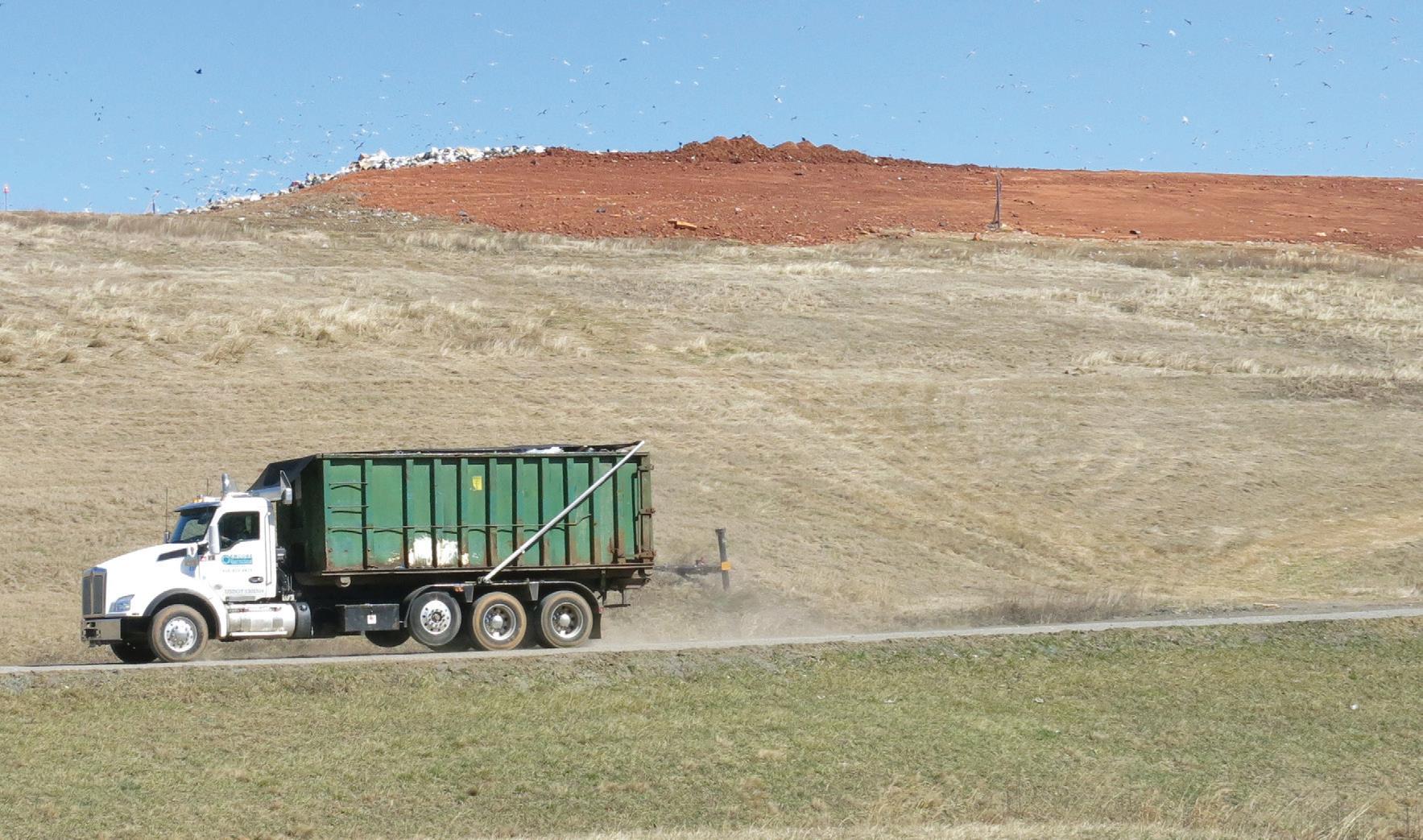
By PAUL RUFFINS
This is the first in a series of articles exploring landfills, food waste and methane emissions in Prince George’s County and neighboring jurisdictions. The series is partly supported by an Environmental Solutions Journalism Fellowship from the Massachusetts Institute of Technology.
Imagine that it’s March 2024, and spring cleaning has left you with three broken bicycles, two dead car batteries, and an unlabeled plastic jug of pesticide or paint thinner. The quickest way to dispose of everything is to drive to the county’s Brown Station Road Landfill, in Upper Marlboro. At
CHECK OUT OUR NEW CALENDAR: Visit StreetcarSuburbs. News to see our new online event calendar.
TO AI OR NOT TO AI?
Local governments grapple with
intelligence, P. 11
Prince George’s County State’s Attorney Aisha Braveboy won the Democratic primary for county executive on March 4. Braveboy, 50, will run in the June 3 special election against the winner of the Republican primary, Jonathan White, who won 37% of the vote and edged out Jesse A. Peed, who took 34%, according to unofficial results as of press time from the Maryland State Board of Elections.
this time, it consists of a closed section, A, that is 148 acres, and an active section, B, that is 140 acres — as large as 106 football fields. When you arrive, there are two lines of traffic outside the scale house. In the left lane are commercial vehicles and garbage trucks, waiting to be weighed. The right lane is for private vehicles. Both lanes could be headed to several designated drop-off points for televisions, appliances, scrap metal, recyclables, household hazardous waste and other items the county doesn’t want landfilled. The bikes and battery will be recycled for their steel and lead. Your jug of unidentified chemicals will go to a company licensed to dispose of hazardous waste. The per-ton tipping fee for commercial vehicles is $77 for general trash, up from $59 in 2021. Your load is free, but your license has been carefully checked to prove you are a county resident. Prince George’s County is running out of landfill space, and it rejects all loads from outside its borders. What’s more, if you were to do

Braveboy, who had been touted as the Democratic frontrunner before the primary election, took more than 46% of the vote. In second place as polls closed was Rushern L. Baker III, with 19% of the vote, followed by Calvin S. Hawkins Jr., with almost 17%.
Nine Democrats and three Republicans were on the primary ballot. Prince George’s County voters typically elect Democrats, making Braveboy the presumed front-runner
By CHRIS MCMANES
The trophy that the Archdiocese of Washington presents to the boys 14U Mid-Atlantic city championship team is not meant to be a permanent award. But don’t tell that to St. Jerome. The parish has had the trophy in its gymnasium since 2022.
And that’s where it’ll stay for another year.
The Jaguars won their ninth MidAtlantic title and fourth in a row Feb.
25 with a 47-29 victory over St. Thomas More. With 10 minutes to play in the second half, St. Jerome left little doubt that it would reign victorious over its Southeast Washington opponent by establishing a 38-6 lead.
Yusuf Zaid led the Jaguars with 11 points, and Alex Dye had nine. Four other players, including playoff MVP Dylan Higginbotham, all scored six points.
The win was especially satisfying for

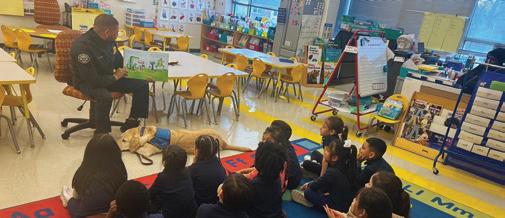
By JENNIFER RIDGWAY
The arts community calls on the Maryland General Assembly to reject Gov. Wes Moore’s proposed fiscal year 2026 budget, which eliminates a critical budget formula, threatening vital support for our state’s arts.
In 2017, a $5 billion local, state and national investment in the arts generated an impressive $27.5 billion in government revenue. In Maryland alone, the arts contribute nearly $13 billion to our economy, supporting over 80,000 jobs and generating $7.3 billion in wages. Beyond economics, the arts enrich cultural identity and cohesion, enhance learning, promote social engagement, inspire innovation and more.
At the heart of our communities are teaching artists — established artists trained in making arts learning accessible across all ages, from babies to elders. In 2024, the Maryland State Arts Council (MSAC) allocated $900,000 to support over 200 programs led by teaching artists. Operating at the intersection of art, education and community, these artists contribute to diverse sectors, including education, health, justice, business and the environment. Historically undervalued and unrecognized, teaching artists face exploitation and inadequate compensation without benefits like health care and job security. They are even overlooked by the U.S. Department of Labor’s classification system of nearly

A community newspaper
chronicling the life and times of Hyattsville Mailing address: PO Box 132, Hyattsville, MD 20781
http://facebook.com/ HyattsvilleLife
http://twitter.com/HvilleTimes
Hyattsville Life & Times is published monthly by Streetcar Suburbs Publishing Inc., a 501(c) (3) nonprofit corporation. Editors welcome reader input, tips, articles, letters, opinion pieces and photographs, which may be submitted using the mailing address above or the email addresses provided.
900 occupations. They need support.
As a proud third-generation county resident, I’m committed to strengthening my community using my 30 years of experience as a theatre artist. In December 2024, the Maryland Department of Transportation recognized Yard Dramas, a company I founded in April 2020 in response to the pandemic, as a certified minority business enterprise. Throughout my journey, MSAC has supported my local projects. Programs that I developed independently and in partnership with local nonprofits and government agencies in the last year include the following:
• a residency at Capitol Heights Elementary, where first graders made puppets, exploring the vital role of pollinators, while second graders staged a farm-totable restaurant inspired by Georgia Gilmore’s legacy, enhancing learning, fostering collaboration and nurturing social-emotional well-being;
• collaborations with the Takoma Park Maryland Library at Crossroads Farmers Market and with Espirales Montessori, a home day care based in Hyattsville’s Ward 3, brought community drama programs to nontraditional outdoor locations, increasing literacy, fostering creativity, communication and collaboration, and nurturing the stewardship of our environment;
• a partnership with Hyattsville Aging in Place united residents aged 65 to 85 from all of Hyattsville’s five
Managing Editor
Griffin Limerick griffin@streetcarsuburbs.news
Associate Editor
Heather Wright heather@hyattsvillelife.com
Layout & Design Editors
Ashley Perks, Valerie Morris
Streetcar Suburbs Webmaster Jessica Burshtynskyy jessica@streetcarsuburbs.news
Columnists
Imke Ahlf-Wien, Jessica Arends, Rick Borchelt, Victoria Boucher, Paul Ruffins, Heather Marléne Zadig
Contributers
Chris McManes, Isaiah Shiau
Advertising advertising@streetcarsuburbs.news 301.531.5234
wards to devise a performance showcasing their shared experiences. Through the work, participants bridged the divides created by economic, racial, gender and age-related issues, dispelling myths about identity and community.
Transformative programs like these, led by teaching artists and partly supported by MSAC, play a vital role in our communities, often at no cost to participants. Funding increases the opportunity for artists to achieve a living wage that covers benefits and supports our operating expenses as small business owners. Now more than ever, visionaries and champions are needed to safeguard this important work that is key to our community’s vibrancy.
Moore’s proposal undermines the sustainability of Maryland’s creative contributors. With the dismantling of a 30-year budget formula, critical funding from MSAC for teaching artists and their programs could disappear, as we’ve seen happen in Florida. Is this the future we want for Maryland?
Connect with local teaching artists, support their businesses, and reject the Budget Reconciliation and Financing Act of 2025 to uphold Maryland arts, including teaching artists.
The State House Appropriations Committee’s budget hearing was held Feb. 27, and the State Senate Budget and Taxation Committee’s was on Feb. 28. Budget decisions won’t be finalized until March 31, however, so call committee members and complete the
Business Manager
Catie Currie catie@streetcarsuburbs.news
Advertising Sales Manager Miranda Goodson
Executive Director
Kit Slack
Board of Directors
President: Marta McLellan Ross
Vice President & General Counsel: Michael Walls
Treasurer: Joe Murchison
Secretary: Melanie Dzwonchyk
Bette Dickerson, Nora Eidelman, Joseph Gigliotti, Maxine Gross, Merrill Hartson, T. Carter Ross, Stephanie Stullich
Ex Officios: Katie V. Jones, Griffin Limerick, Sharon O’Malley, Kit Slack
Circulation: Copies are distributed monthly by U.S. mail to every address in Hyattsville. Additional copies are distributed to libraries, selected businesses, community centers and churches in the city. Total circulation is 9,300.
action alert from the Maryland Citizens for the Arts, at tinyurl. com/33aj2k44, to protect Maryland arts and ensure the arts remain accessible to all Marylanders.

By ISAIAH SHIAU
Community members voiced concerns over Prince George’s County Public Schools’ budget priorities during a school board meeting on the evening of Feb. 27.
The $2.9 billion budget proposed by superintendent Millard House II is similar in overall amount to the previous year’s budget (fiscal year 2025) of $2.8 billion.
House spoke about the school board’s request to rename schools after individuals without a history of racism — a multi-year process that would cost $12 million. The board’s proposition was met with criticism during the meeting’s public comments.
County guidelines require schools named after an individual to honor someone who has made a “notable contribution” to Prince George’s County or the country. Charles Herbert Flowers High School, in Springdale, was named in honor of a Tuskegee airman, for example.
“Renaming of these schools is more than just a symbolic gesture,” House said. “Quite frankly, it’s a necessary step towards the creation of learning environments that truly honor and inspire students.”
In response, residents questioned the board’s prioritizing school renamings over a focus on traditional education. Despite the 5.6% overall rise in graduation rates, including a 12% increase for Hispanic students and a 14.6% increase for English-language learners, touted by House in his presentation, the budget was the main focus of community members’ comments.
$12 million request to rename schools over educating kids.” For perspective, the requested budget for renaming is roughly three times the $4 million budget for staff and student digital tools.
“It needs to be justified and aligned with the academic success for the students, the need of the classroom,” resident Delores Millhouse said. “We will not stand by and allow you to misuse funding.”
Other community members called attention to the $37 million budget deficit for FY 2026 and how increasing expenditures could exacerbate the deficit.
“Instead of keeping the budget balanced, this board is proposing nearly $10 million in unnecessary amendments,” resident LaVonn Thomas said.
Shannon Reed, a 10th grade teacher at Dr. Henry A. Wise Jr. High School, in Upper Marlboro, argued against spending money on digital teaching platforms such as Achieve 3000, an online accelerated learning website.
“Knowledge is not skill, and a tool is not a teacher. Yet students have been given tools when they need teachers,” Reed said. “Directing teachers to use Achieve 3000 lessons to prepare students for the upcoming spring 2025 MCAP [Maryland Comprehensive Assessment Program] is like giving a starving person a recipe.”
StreetcarSuburbs.News
HL&T is a member of the National Newspaper Association and the Institute for Nonprofit News.
“Transparency is important because budgets reflect the academic priorities,” resident Tonya Wingfield said. “It is unconscionable that I see a
The $4 million for staff and student digital tools makes up 20% of the program enhancements in the proposed FY 2026 budget, which covers funding for the new online student information system, Synergy.
Isaiah Shiau is an undergraduate journalism student at the University of Maryland.
By JESSICA ARENDS
On the icy cold evening of Tuesday, Feb. 18, about 60 people filed into the pews of the University Park Church of the Brethren, the atmosphere solemn and tense.
“I’m here with my mother who is from Poland,” a woman says.
“I studied abroad and saw the effects of totalitarianism,” another says.
“I’m not interested in living in a country with a king,” a woman states firmly.
“I can’t sleep through the night,” a man volunteers from the back of the room. Others nod, saying they are depressed, anxious.
“I don’t have enough Xanax to get me through this. That’s why I’m here.”
“I’ve seen what a lack of democracy can do,” offers a National Archives employee who asked to remain anonymous.
“I’m a lesbian in a biracial marriage.”
“I’m concerned for my trans son.”
A man stands up: “Enough of the group therapy! We need to take action!” Heads nod. The tension has bubbled up into visible frustration.
This is the first gathering of the Indivisible Route 1 Corridor Group, a collection
of residents interested in creating a local chapter of Indivisible — a national organization founded in 2016 to elect progressive leaders and rebuild democracy, according to indivisible.org. This local group aims to “protect our vulnerable community members, use our voice to affect positive change and build a strong community of resisters,” as noted on its website. The group accepts, but is not limited to, residents in Mount Rainier, Brentwood, North Brentwood, Cottage City, Colmar Manor, Hyattsville, Riverdale Park, University Park, College Park, Berwyn Heights, Hollywood and Beltsville.
The meeting continued with people announcing advocacy events they were planning and how the group would communicate.
Hyattsville resident and retired historian Camy Clough was impressed by the turnout on a weeknight: “This means there are more people who are interested. How do we make that circle bigger? If we all came out, our voice would be strong. We have power in numbers.”
Clough said she was motivated to attend the meeting by American social activist Jane Addams’ idea that people have to be actively engaged to sustain democracy.
“History can be a cautionary tale,” Clough said. “But it can also help us by showing how people of a certain time worked to resolve problems.”
Laura Usher, who has recently been organizing local advocacy events, also attended the meeting.
“I know there is a ton of talent and passion for protecting democracy and support in this community,” said Usher, who has lived in Hyattsville for 19 years.
In addition to organizing Hyattsvillians for rallies, holding a protest sign-making party, visiting senator offices, and forming a “We Are Here for Hyattsville” Slack group to communicate action items, Usher also helped to host a “Let’s Call Congress” callin event at Maryland Meadworks where 35 people made 206 calls to representatives on various issues of concern.
“People seemed to be really energized when working in small groups to do some sort of action,” Usher said. “There’s a hunger for that right now in our community. It’s really exciting.”
She continued, “We need to keep that alive because people need to not let what is happening in our government take over their lives.”
John Crumpacker, who also participated

in the call-in event, does not feel as optimistic. After stepping into Meadworks for a drink the evening of the call-in, he joined the event and was proud to see that his calls pushed the total number past the original goal of 150. But he said that making calls to his representatives didn’t change his attitude toward the current political environment.
“I felt helpless before calling. I still do. Is that wrong?” Crumpacker said. “The [representative’s] office must say, ‘Here’s a constituent who called, but who’s writing the biggest check?’ Does the call really matter? That’s why there’s this helplessness.”
Crumpacker, who identifies as a gay conservative, a former Reagan Republican and a socialist, is concerned about the economy. After receiving a $400 gas bill in February, he wrote a letter to his representative.
“We need to focus on what matters to all Americans,” Crumpacker said. “Like the cost of energy bills and taxes.” When asked how she would respond to people who feel discouraged, Usher replied, “It is genuinely a very dire situation. But if we can keep hold of our power then we will survive this better, more joyfully and as a stronger community. I feel an immense responsibility to my son who is fully aware that our democracy is collapsing. I want to be able to say that I did everything that I could. Hopefully, it will be enough.”
Starting March 4, the Route 1 Corridor
SEE HY-LIFE ON 10

Wondering what your home might be worth? Thinking about a move? Our consultations are always free of charge We offer our listing clients:
wondering what it takes to purchase a home in this changing market? We can help with a winning strategy tailored to your needs



By IMKE AHLF-WIEN
In 1963, an iconic cookbook was published by the Hammond-Harwood House Museum in Annapolis, dedicated to “the generations of Maryland cooks who since 1634 have blended the fruits of bay, field and forest into Maryland’s Way.” More than 60 years later, Maryland’s Way: The Hammond-Harwood House Cook Book (over 100,000 copies sold!) is not only an impressive collection of over 700 recipes, but according to Kara Mae Harris, whose blog Old Line Plate features many of them, it’s “a collection of historical documents, compiled in a gargantuan effort and preserved for posterity.”
The history alone merits
leafing through the book’s pages of bountiful recipes for seafood, fowl, game and meat, as well as vegetables, sauces, pastries, pies, cakes and other sweet temptations. Some of the dishes are still popular today — especially the desserts and those featuring Maryland seafood like crab and oysters. Others, like kidney stew or liver pudding, are all but forgotten and are hard to find even at restaurants.
Unfortunately, the cookbook also leaves the discomforting impression that the recipes were executed and compiled by the mistresses of the great manors all around Maryland. But that leaves out a big part of the story.
This is where food historian Joyce M. White comes in.

We rely on the generosity of residents who pitch in to help keep their neighbors informed.
We welcome new tips and photos, as well as letters to the editor and op-eds on topics of local interest. We are looking for volunteer reporters and columnists to help us cover what is happening in our communities more completely.
Please email gri n@streetcarsuburbs. news if you can help out.


Among her other endeavors, White advises the Riversdale House Museum on all things food history. She has been interested in Maryland’s food-
ways for decades and finally brought her research together in the fascinating book Cooking Maryland’s Way: Voices of a Diverse Cuisine, which was
This is one of the many fascinating recipes originating in Maryland and other southern states that, according to Cooking Maryland’s Way: Voices of a Diverse Cuisine , “symbolize the convergence of Native American, European, and West African influences and perfectly symbolizes the multifaceted cuisine of the American South.” It was a typical “post-hunt dish” that commonly used small game, such as squirrel or rabbit, and was cooked over a long time. Because not everyone has access to freshly hunted squirrels or rabbits, this recipe uses chicken instead. It would be an ideal dish to make in a slow cooker.
Ingredients:
2 young chickens, preferably pastured, cut into parts
3 slices bacon
1 onion, diced
3 medium potatoes, diced
1 red bell pepper, diced
1 28-ounce can peeled tomatoes
2 cups yellow corn
1 cup butter beans
1 tbsp butter
1 tbsp breadcrumbs
Directions:
Add chicken pieces, bacon and onion to a gallon of water to boil about four hours before dinner. Stew about one hour, then add other ingredients and stew until the bones of the chickens can be readily removed. Add breadcrumbs and butter.
published last year — just in time to celebrate the Hammond-Harwood House’s 250th anniversary.
In an interview with the Life & Times, White explained that, while the original cookbook reflects diversity, it doesn’t acknowledge it. And that’s what she set out to change — by telling the stories of the people behind the food that were never told before. She was surprised, she said, how much material she found in letters, journals, oral histories, newspaper articles and advertisements, as well as in archaeology and research journals.
There’s Sam, the enslaved cook who worked at the Riversdale House Museum and is likely the creator of the Strawberry Hill Beef Stew recipe featured in Maryland’s Way. And there’s Sybby, who was enslaved by the Thomas family in Baltimore where she oversaw the kitchen and was often tasked with creating meals that may have consisted of two to three courses, each with up to 20 individual dishes. These are just two stories among many others which White rescues from oblivion, rectifying and enriching the narrative of Maryland foodways.
Maryland’s food history



By RICK BORCHELT
“Home! That was what they meant, those caressing appeals, those soft touches wafted through the air, those invisible little hands pulling and tugging, all one way!”
So thought Mole, the first character one meets in Kenneth Grahame’s children’s novel The Wind in the Willows. Mole had clambered aboveground from his earthen tunnels for the first time in his young life, but the scents of home were calling him back underground.
In stereo, as it happens. More on that in a moment.
While Mole of The Wind in the Willows was a European mole (Talpa europaea), the Eastern moles (Scalopus aquaticus) common across Maryland might be having the same experience this March. Having spent the winter alone in leaf- or grass-lined nests in a burrow one or two feet deep, our hamster-sized moles are beginning to stir in search of mates. Moles have an exquisite sense of smell that leads them to those potential partners, to the earthworms and grubs that make up the bulk of their diet, and to fresh new lawns and pastures in which they tunnel.
Since our moles seldom venture aboveground, most of us come to know them by the tunnels they dig in search of food and new homesites. The tunnels at the surface can
as helpless prey fall into the waiting chasms. Moles are supremely adapted for this subterranean lifestyle. They have enormous, spadelike front feet angled outward from their body that make digging fast and efficient. They have no eyes to speak of, so there’s no chance of getting dirt in them, and their ears are tiny and covered with fur. The fur itself is short, soft and velvety, and can be brushed in any direction, offering little resistance to the soil. When a mole wants to turn around in a tunnel, it simply does a quick somersault and reverses direction.
Their frenetic tunneling keeps SEE REWILDING ON 8
be simply long, narrow and meandering raised bumps in a yard or field, or they can be a series of fresh soil mounds dotting the lawn (the source of the term “molehill”). Moles are prodigious diggers; in loose soil, they can tunnel almost 20 feet in an hour. These tunnels serve as mole highways, certainly, but they are also effective earthworm and grub traps
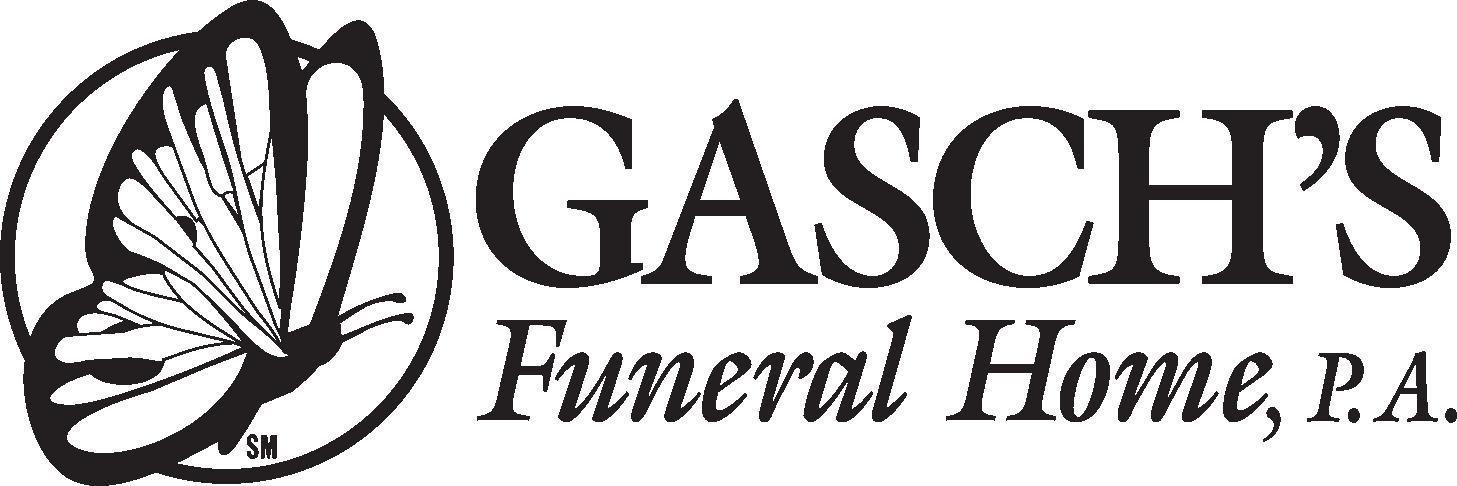


















































































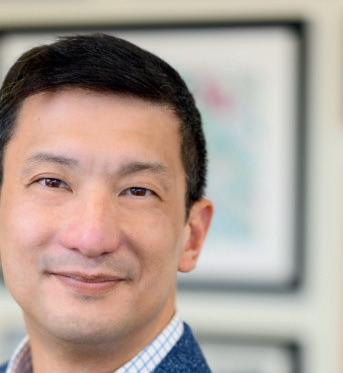



















ahead of the June 3 special election.
The Upper Marlboro resident told Streetcar Suburbs Publishing — who puts out the Life & Times — that she will devote her first year in office to strengthening the county’s finances, expanding its commercial tax base, supporting local businesses and retaining residents.
She also said she will confront the county’s $171 million budget deficit without raising taxes.
If Braveboy wins the June 3 general election, she will replace Angela Alsobrooks, who won a seat in the U.S. Senate in November 2024 after serving as county executive since 2018 and as county attorney for eight years before then. Alsobrooks left her post two years before the end of her term.
At about 10:15 p.m. on Feb. 28, a driver fleeing an attempted traffic stop by Hyattsville police struck and killed a pedestrian along East-West Highway in Chillum, according to a press release issued by the state’s attorney general’s office. The driver reportedly stopped briefly in the 3300 block of EastWest Highway but then fled, heading west. The officer initially followed but stopped his pursuit of the Lincoln sedan
soon after crossing into Chillum, with both cars heading towards the intersection of EastWest Highway and 23rd Avenue.
According to the press release, the sedan went through the intersection, sped onto the shoulder of East-West Highway and hit a pedestrian on the roadside. The pedestrian, later identified as 33-year-old Esmeralda Montoya-Perez, of Riverdale Park, was pronounced dead on the scene.
The driver, 23-year-old Warren Leonard, of D.C., was taken into custody and transported to an area hospital with non-lifethreatening injuries. According to a Hyattsville Police Department press release, he was charged with possession of a firearm and had an outstanding warrant for second-degree rape.
The Maryland State Highway Administration’s pedestrian safety plan has proposed various improvements for this intersection of EastWest Highway and 23rd Avenue, including reducing or eliminating channelized right-turn lanes and adding hardened centerlines that aim to slow left-turning vehicles.
The Independent Investigation Division (IID) of the Office of the Attorney General and the Maryland State Police Crash Team are investigating the incident, as of press time. If you have any information about the investigation, contact the IID at 410.576.7070 or IID@oag.state.md.us.
On Sept. 26, 2019, police officers from three local jurisdictions responded to an emergency call near the intersection of East-West Highway and Adelphi Road that led to officers shooting and killing Leonard Shand. More than five years later, on Jan. 27, 2025, a county circuit judge ruled in favor of the City of Hyattsville and two Hyattsville Police Department (HPD) officers in a case alleging excessive use of force.
According to a summary of the facts by an appellate court, Shand was agitated and wielding two knives prior to the shooting. Officers attempted to deescalate the situation by negotiating, but resorted to using a taser and pepper spray, in addition to trying to knock Shand down by driving a car towards him. Officers then used a flash bang grenade and a beanbag shotgun. (Shand had previously told the officers he would charge if the beanbag shotgun were fired at him.) Shand ran away from the grenade and towards the officers. Six HPD officers, three county police officers and one Mount Rainier officer then fired a total of 24 rounds at Shand, resulting in his death.
About a year later, on Sept. 10, 2020, Aisha Braveboy, state’s attorney for Prince George’s County, announced that a
county grand jury had declined to indict any of the officers involved. “Please know that the grand jury’s decision not to indict, and the conclusions reached by the independent use-of-force expert, does not ease our collective grief, nor does it signal that the response of the officers that day was satisfactory,” Braveboy said at the time.
On Aug. 22, 2022, a county circuit court decided in favor of the City of Hyattsville and two of its police officers, finding that the police had not used excessive force.
On May 31, 2023, a state appeals court ordered the case back to the county circuit court to consider specifically whether the officers’ simultaneous use of the flash bang grenade and beanbag shotgun constituted unreasonable force.
This Jan. 27, a jury trial commenced at the county circuit court. According to court documents, the City of Hyattsville asked for a summary judgement after the estate of Leonard Shand presented their case. (A summary judgment is a court ruling that ends a case without a full trial.) The judge decided in favor of the City of Hyattsville and the two officers.
On Feb. 18, attorneys representing Shand’s estate requested a new trial. As of press time, the court system had not issued a decision in response to the request.

On Jan. 19, a Hyattsville police officer pulled a driver out of a burning SUV on Queens Chapel Road. Body camera footage released by the Hyattsville Police Department (HPD) shows Cpl. Kelly Hernandez running towards a burning SUV as a man calls out, “Please help — my leg’s broken — please.” Hernandez quickly grabs the man, pulls him out and drags him to safety while flames continue to engulf the vehicle.
“Hearing his pleas for help, I just knew I had to get him out of there,” Hernandez told 7News DC during a February interview. Hernandez said the original call was an iPhone car accident alert. Some iPhones are equipped with crash detection technology that will alert emergency personnel to a severe car crash in their vicinity. Hernandez said that she didn’t know, therefore, what type of car accident she would find, nor its exact location.
“I’m not surprised Cpl. Hernandez stepped up and risked her own life for someone else,” HPD Chief Jarod Towers said in an email. “This incident reinforces Cpl. Hernandez’s commitment to the communities for which she serves, and serves as a reminder of the sacrifice that our officers make for people they don’t even know. They are true heroes.”
Hernandez joined the HPD in October 2017. In 2021, she became the department’s first certified drug recognition expert and also received several traffic safety awards, as reported in our September 2021 article. Hernandez is with the department’s patrol division and supervises its traffic safety team, according to Towers.

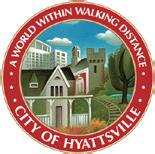

HPD’s Lieutenant Evans and K-9 Nola made storytime paws-itively fun for students at Felegy Elementary as part of Read Across America Week!| ¡El teniente Evans de la policía de Hyattsville y la K-9 Nola hicieron que la hora del cuento fuera muy divertida para los alumnos de la escuela primaria Felegy como parte de la Semana de la Lectura en América!
Celebrate Women’s History Month on March 20 from 6 – 7:30 p.m. at the City Building, 4310 Gallatin St. with a spoken word performance and workshop! Join Busboys & Poets literary curators Dr. Casey Catherine Moore and Mariah Barberas as they perform powerful works of women’s resistance and resilience, hosted by Regie Cabico, called the “Fairy Godmother of DC Poetry” by the Washington Post.
After the performances, stay for Rooted Voices: A Women’s History Month Writing Workshop with Dr. Moore. Explore empowerment and identity through nature, inspired by Audre Lorde, Mary Oliver, and more. Create poems that reconnect us to ourselves and the world, honoring resilience and strengthening our voices. Learn more and register at hyattsville.org/whm.
RUN FOR OFFICE IN THE 2025 CITY ELECTION!
There’s still time to register as a City Council candidate for the May 13 City Election! Show Up for your neighbors and represent your Ward. Candidate registration closes March 14 at 5 p.m. Get all the details and complete your registration at hyattsville.org/candidates.
Not interested in running for office? You can still Turn Up and vote this May! Don’t miss your chance to have a say in who represents you on City Council. New voters should register to vote by March 13 to receive a ballot by mail. Same day registration will also be available in-person on Election Day. Learn more at hyattsville.org/elections.
Celebra el Mes de la Historia de la Mujer el 20 de marzo de 6 - 7:30 p.m. en el Edificio Municipal, 4310 Gallatin St., con una presentación de poesia y taller. Acompáñanos con las curadoras literarias de Busboys & Poets, la Dra. Casey Catherine Moore y Mariah Barberas, quienes presentarán poderosas obras sobre la resistencia y la resiliencia de las mujeres, bajo la conducción de Regie Cabico, conocida como la “Hada Madrina de la Poesía de DC” por el Washington Post.
Después de las presentaciones, quédate para Rooted Voices: un taller de escritura en honor al Mes de la Historia de la Mujer con la Dra. Moore. Explora el empoderamiento y la identidad a través de la naturaleza, inspirado por Audre Lorde, Mary Oliver y otros. Crea poemas que nos reconecten con nosotras mismas y con el mundo, honrando la resiliencia y fortaleciendo nuestras voces. Obtén más información y regístrate en hyattsville.org/whm.
¡POSTULESE COMO CANDIDATO PARA LAS ELECCIONES MUNICIPALES DEL 2025!
¡Todavía hay tiempo para postularse como candidato al Concejo Municipal para las elecciones del 13 de mayo! ¡Hazte preséntate por tus vecinos y representa tu distrito! El registro de candidatos cierra el 14 de marzo a las 5 p.m. Mas informacion y completa tu registro en hyattsville.org/candidates.
¿No estás interesado en postularte? ¡Puedes votar este mayo! No pierdas la oportunidad de decidir quién te representará en el Concejo Municipal. Los nuevos votantes deben registrarse antes del 13 de marzo para recibir su boleta por correo. También se podrá registrar el mismo día de las elecciones de forma presencial. Aprende más en hyattsville.org/elections.
Time to renew your Residential Parking Permit! On-street parking in Residential Parking Zones requires a valid permit during posted times. Permit renewals for Zones 3, 4 & 12 are open until March 31. Renewals are processed online only. Find the permit portal and upcoming Zone renewal dates at hyattsville.org/parking.
The Educational Path Scholarship supports Hyattsville high school seniors and graduates pursuing post-secondary education and career paths with funding for tuition, books, or other school materials. Applications close March 24! Apply at hyattsville.org/youth-scholarships.
Looking to develop new skills in a fun, hands-on way? Join us for drop-in clinics at the Hyattsville Teen Center on Wednesdays, from 5-6 p.m at 3911 Hamilton St. Learn more and register at hyattsville.org/teen-center.
• Financial Literacy Clinic – March 12: Master the basics of managing money, budgeting, investing, and saving, while exploring potential careers in finance.
• Cooking Clinic – March 19: Learn how to make donuts from scratch with Chef Carlos Castro.
• Cycling Clinic – March 26: Get expert tips on biking safety, technique, and more.
Teens can also relax and express themselves through art, music, games, and mindfulness at the In Wellness We Thrive-Expressive Arts Group. Running from March 11 - May 6, this program offers a creative, supportive space for students in grades 6-12 every Tuesday from 5-6 p.m. Register and learn more at hyattsville.org/teen-center.
COMMERCIAL FACADE IMPROVEMENT PROGRAM INFORMATION SESSIONS
This Spring, Hyattsville business and property owners can apply for matching grants up $35,000 to enhance their building’s exterior! Learn more at an in-person information session on March 20, 9 – 10 a.m. at Emerita’s Carry Out, 5408 Queens Chapel Road, or a virtual session on March 27, 9 – 10 a.m. Register at hyattsville.org/CFI.
ATTEND THE CITY OF HYATTSVILLE HOUSING FAIR!
The City of Hyattsville’s Housing Fair is back this Spring! Join us on Saturday, April 5 from 10 a.m. – 2 p.m. at Hyattsville Middle School, 6001 42nd Avenue, for expert tips on first-time homebuyer guidance, home repair assistance, and renter support. Whether you’re looking to rent or buy, the Housing Fair will point you in the right direction! Check hyattsville.org/housing for workshop schedule and exhibitors.
RENOVACIÓN DE PERMISO DE ESTACIONAMIENTO
¡Es hora de renovar tu Permiso de Estacionamiento Residencial! El estacionamiento en la calle dentro de las Zonas de Estacionamiento Residencial requiere un permiso válido durante los horarios indicados. Las renovaciones de permisos para las Zonas 3, 4 y 12 estarán disponibles hasta el 31 de marzo. Las renovaciones se procesan únicamente en línea. Encuentra el portal de permisos y fechas de renovación de próximas zonas en hyattsville.org/parking.
BECA CAMINO EDUCATIVO
La Beca Camino Educativo apoya a los estudiantes de último año de secundaria y graduados de Hyattsville que buscan educación postsecundaria y carreras, con fondos para matrícula, libros u otros materiales escolares. Las solicitudes se cierran el 24 de marzo! Inscríbete en hyattsville.org/youth-scholarships.
TALLERES Y GRUPOS DE ARTE DEL CENTRO DE JÓVENES
¿Quieres desarrollar nuevas habilidades de una manera divertida y práctica? Únete a nosotros para los talleres en el Centro de Adolescentes de Hyattsville los miércoles de 5-6 p.m., en 3911 Hamilton St. Aprende más y regístrate en hyattsville.org/teen-center.
• Taller de Educación Financiera – 12 de marzo: Aprende lo básico sobre la gestión del dinero, presupuestos, inversión y ahorro, mientras exploras carreras potenciales en finanzas.
• Taller de Cocina – 19 de marzo: Aprende a hacer donas desde cero con el Chef Carlos Castro.
• Taller de Ciclismo – 26 de marzo: Obtén consejos de expertos sobre seguridad en bicicleta, técnica y más.
Los adolescentes también pueden relajarse y expresarse a través del arte, la música, los juegos y la meditación en Con Bienestar Prosperamos - Grupo de Arte Expresivo. Desde el 11 de marzo hasta el 6 de mayo, este programa ofrece un espacio creativo y de apoyo para estudiantes de 6º a 12º grado, todos los martes de 5-6 p.m. Regístrate y aprende más en hyattsville.org/teen-center.
SESIONES DE INFORMACIÓN DEL PROGRAMA DE MEJORA DE FACHADAS COMERCIALES
This Spring, Hyattsville business and property owners can apply for matching grants up $35,000 to enhance their building’s exterior! Learn more at an in-person information session on March 20, 9 – 10 a.m. at Emerita’s Carry Out, 5408 Queens Chapel Road, or a virtual session on March 27, 9 – 10 a.m. Register at hyattsville.org/CFI.
¡ASISTE A LA FERIA DE VIVIENDA DE LA CIUDAD DE HYATTSVILLE!
¡La Feria de Vivienda de la Ciudad de Hyattsville regresa esta primavera! Únete a nosotros el sábado 5 de abril de 10 a.m. - 2 p.m. en la Escuela Secundaria de Hyattsville, 6001 42nd Avenue, para recibir orientación para compradores de vivienda primerizos, asistencia en reparaciones de viviendas y apoyo a arrendatarios. ¡Ya sea que busques alquilar o comprar, la Feria de Vivienda te guiará en la dirección correcta! Consulta el horario de talleres y expositores en hyattsville.org/housing.
SPRING CLEANING EVENT!
Time for a refresh! Bring electronics recycling or bulk waste like broken furniture, home goods, yard equipment, and bagged trash to the DPW Operations Center, 4637 Arundel Pl. on March 29 from 10 a.m. - 1 p.m., or until containers reach capacity. ‘Yuck Old Paint’ will also be onsite to recycle unwanted latex paint cans at a cost of $5 per can (paint must be wet and in its original container). For a list of acceptable items, visit hyattsville.org/waste.
¡EVENTO DE LIMPIEZA DE PRIMAVERA!
¡Es hora de empezar fresco! Lleva reciclaje de electrónicos o desechos voluminosos como muebles rotos, artículos del hogar, equipos de jardinería y basura al DPW Centro de Operaciones, 4637 Arundel Pl el 29 de marzo de 10 a.m. a 1 p.m., o hasta que los contenedores lleguen a su capacidad. ‘Yuck Old Paint’ también estará presente para reciclar latas de pintura de látex no deseadas con un costo de $5 por lata (la pintura debe estar húmeda y en su envase original). Visite hyattsville. org/waste para ver una lista de artículos aceptables.
FREE ZUMBA CLASSES
Wednesdays from 4 - 5 PM at the City Building! Details at hyattsville.org/wellness.
SEATED EXERCISES
Older adults can join seated exercise classes on Wednesdays, 10 - 11 AM. at the City Building, 4310 Gallatin St. Contact 301-985-5000 or seniors@hyattsville.org to register.
YOUTH EXPRESSIVE ARTS GROUP
For students in grades 6 -12 to explore emotions through art, music and mindfulness. Tuesdays, 5 - 6 PM, from March 11-May 6 at the Teen Center, 3911 Hamilton St, hyattsville.org/teen-center.
YOUTH FINANCIAL LITERACY CLINIC
Students in grades 6-12 can learn valuable financial skills! March 12, 5-6 PM at the Teen Center, 3911 Hamilton St. hyattsville.org/teen-center.
SENIORS ON THE GO
Enjoy a trip to Downtown Silver Spring Mall on March 13 and to the National Postal Museum on March 27, 10 AM - 2 PM! Reserve a seat by calling (301) 985 - 5000 by 2 p.m. the Wed. before the trip.
NIGHT OWLS
Drop off your little one(s) in grades K-5 at the Driskell Park Rec Center from 6 - 9 PM on March 14! Kids participate in fun activities while you get a night out! hyattsville.org/ nightowls.
TREE CARE & MAINTENANCE TALK
Join us on March 15 at Hamilton Splash Park, 3901 Hamilton St. from 10 AMNoon for a tree pruning & maintenance talk. hyattsville. org/enviro-education.
INVASIVE REMOVAL
Help remove invasive plants from Driskell Park, 3911 Hamilton St from 10 AM - 2 PM on March 15! RVSP to environment@hyattsville.org.
LUNCH & LEARN: MENTAL HEALTH
Join us for a free workshop on mental health for older adults on March 17, 11 AM - 1 PM, 4310 Gallatin St. Register online using RecDesk; details at hyattsville.org/seniors.
A free produce distribution is taking place on March 18, First United Methodist Church, 6201 Belcrest Rd. starting at noon.
Join Chef Carlos Castro on March 19 & April 2, from 5 - 6 PM, 3911 Hamilton St to learn how to make donuts from scratch! hyattsville.org/teencenter
CERT MEETING
Attend our next Community Emergency Response Team (CERT) meeting on March 19, 6:30 PM, at the City Building. hyattsville.org/cert.
COMMERCIAL FACADE IMPROVEMENT INFO SESSIONS
Learn more about matching grants for businesses to enhance their building’s exterior at an in-person info session on March 20 at Emerita’s Carry Out, 5408 Queens Chapel Rd., or a virtual session on March 27
Both sessions at 9 – 10 AM. hyattsville.org/CFI.
NARCAN TRAININGS
NOW IN SPANISH!
Join us for free NARCAN community trainings at the City Building on March 20 at 6 PM and March 21 at 10 AM. Spanish-language classes available for both sessions hyattsville.org/calendar.
CARE PARTNER
SUPPORT GROUP
Join the City’s care partner support group on March 21, 9 - 10:30 AM at the City Building. hyattsville.org/calendar.
WOMEN ARE FORCES OF NATURE
Enjoy of a poetry jam session about women’s resistance and resilience on March 20, 6 – 7:30 PM at 4310 Gallatin St. hyattsville.org/whm.
YOUTH CYCLING CLINIC!
Join us on March 26, 5 - 6 PM, 3911 Hamilton St, to get tips on bicycling safety & technique. hyattsville.org/teen-center.
DIAPER DISTRIBUTION
FREE diaper distribution on March 28 at the City Building at 9:30 AM. Proof of the child’s date of birth is required. hyattsville.org/calendar.
SPRING CLEANING
Bring electronics recycling or bulk waste to 4637 Arundel Pl on March 29 from 10 AM - 1 PM. ‘Yuck Old Paint’ will be onsite to recycle latex paint cans at a cost of $5 per can. Details: hyattsville.org/waste.
MINI CAMP DAY
Register your student in grades 3 - 5 for camp on March 31, 9 AM - 3 PM, Driskell Park Center, 3911 Hamilton St.! (K-2 spaces are full) hyattsville. org/minicamp.
HOUSING FAIR
Get expert tips on first-time homebuyer, home repair assistance, and renter support on April 5 from 10 AM – 2 PM at HMS, 6001 42nd Ave. hyattsville.org/housing.
BUSINESS ROUNDTABLE
Join local business and non-profit leaders for resource updates and networking on April 8 from 9 – 10:30 AM at Marleys, 6450 America Blvd. hyattsville.org/roundtable.
ZUMBA GRATUITO
Miércoles, 4 - 5 PM en el Edificio Municipal. hyattsville. org/wellness.
EJERCICIOS SENTADOS
Clases de ejercicios sentados los miércoles de 10 - 11 AM en el Edificio Municipal. Regístrate: 301-985-5000, seniors@hyattsville.org.
GRUPO DE ARTE JUVENIL
Para que los estudiantes de 6º a 12º exploren las emociones a través del arte, la música y la atención plena. Martes, 5 - 6 PM, del 11 de marzo al 6 de mayo en el Centro de Jovenes, 3911 Hamilton St, hyattsville.org/teen-center.
TALLER: FINANCIERO
¡Estudiantes de 6-12 grado aprenderan sobre finanzas! 12 de marzo, 5-6 PM, Centro Juvenil, 3911 Hamilton St. hyattsville.org/teen-center
PASEOS PARA ADULTOS MAYORES
¡Visite el Downtown Silver Spring Mall el 13 de marzo y al National Postal Museum el 27 de marzo, de 10 AM - 2 PM! Reserva: (301) 9855000 antes de las 2 PM del miércoles anterior al viaje.
BUHOS NOCTURNOS
Deja a tus hijos en grados
K-5 en el Driskell Park Rec Center de 6 - 9 PM el 14 de marzo. ¡Los niños participan en actividades divertidas! hyattsville.org/nightowls.
MANTENIMIENTO DE ÁRBOLES
Únete a nosotros el 15 de marzo en Hamilton Splash Park, 3901 Hamilton St de 10 AM - 12 PM para una charla sobre poda y mantenimiento de árboles. hyattsville.org/ enviro-education.
ELIMINACIÓN DE PLANTAS INVASORAS
¡Ayuda a eliminar plantas invasoras del Driskell Park, 3911 Hamilton St de 10 AM - 2 PM el 15 de marzo! RSVP a environment@hyattsville.org.
SALUD MENTAL
Acompáñenos en un taller gratuito sobre salud mental para adultos mayores el 17 de marzo, 11 AM - 1 PM, en 4310 Gallatin St. Inscríbase en línea utilizando RecDesk; hyattsville.org/seniors.
ALIMENTOS GRATIS
Distribución gratuita de alimentos el 18 de marzo en 6201 Belcrest Rd, al mediodía.
TALLER DE COCINA
¡Únete al Chef Carlos Castro el 19 de marzo y el 2 de abril de 5 - 6 PM en 3911 Hamilton St para hacer donas! hyattsville.org/teen-center
REUNIÓN CERT
Asiste a nuestra reunión del Equipo Comunitario de Respuesta a Emergencias (CERT) el 19 de marzo, 6:30 PM en el Edificio Municipal. hyattsville.org/cert.
MEJORA DE FACHADAS
Aprende sobre el programa para que negocios mejoren fachadas el 20 de marzo en Emeritas, 5408 Queens Chapel Rd. o una sesión virtual el 27 de marzo Ambas de 9 - 10 AM. hyattsville.org/CFI.
NARCAN: AHORA EN ESPAÑOL!
Entrenamientos gratuitos de NARCAN en el Edificio Municipal el 20 de marzo a las 6 PM y el 21 de marzo a las 10 AM. Ambas sesiones en español. hyattsville.org/ calendar.
GRUPO DE APOYO
PARA CUIDADORES
Grupo de apoyo para cuidadores el 21 de marzo de 9-10:30 AM en el Edificio Municipal. hyattsville.org/ calendar.
LAS MUJERES SON FUERZAS DE LA NATURALEZA
Sesión de poesía sobre la resistencia y la resiliencia de las mujeres el 20 de marzo de 6-7:30 PM en 4310 Gallatin St. hyattsville.org/whm.
TALLER: CICLISMO
Únete a nosotros el 26 de marzo de 5 - 6 PM en 3911 Hamilton St para obtener consejos sobre seguridad y técnica en el ciclismo. hyattsville.org/teen-center.
DISTRIBUCIÓN DE PAÑALES
Distribución gratuita de pañales el 28 de marzo en el Edificio Municipal, 9:30 AM. Se requiere prueba de la fecha de nacimiento del niño. hyattsville.org/calendar.
LIMPIEZA DE PRIMAVERA
Trae reciclaje de electrónicos o desechos voluminosos a 4637 Arundel Pl el 29 de marzo de 10 AM - 1 PM. ‘Yuck Old Paint’ estará presente para reciclar latas de pintura látex a un costo de $5 por lata. hyattsville.org/waste.
DÍA
¡Registra a tu estudiante en los grados 3 - 5 para el campamento el 31 de marzo, de 9 AM - 3 PM, en Driskell Park Center. hyattsville.org/ minicamp.
FERIA DE VIVIENDA
Obtenga consejos de expertos sobre compra de viviendas, asistencia para reparaciones en el hogar y apoyo para inquilinos el 5 de abril de 10 AM - 2 PM en HMS, 6001 42nd Ave. hyattsville.org/housing.
MESA REDONDA DE NEGOCIOS
Únase a los líderes de negocio y de organizaciones sin fines de lucro locales para obtener información sobre recursos y establecer contactos el 8 de abril de 9 - 10:30 AM en Marleys, 6450 America Blvd. hyattsville.org/ roundtable.



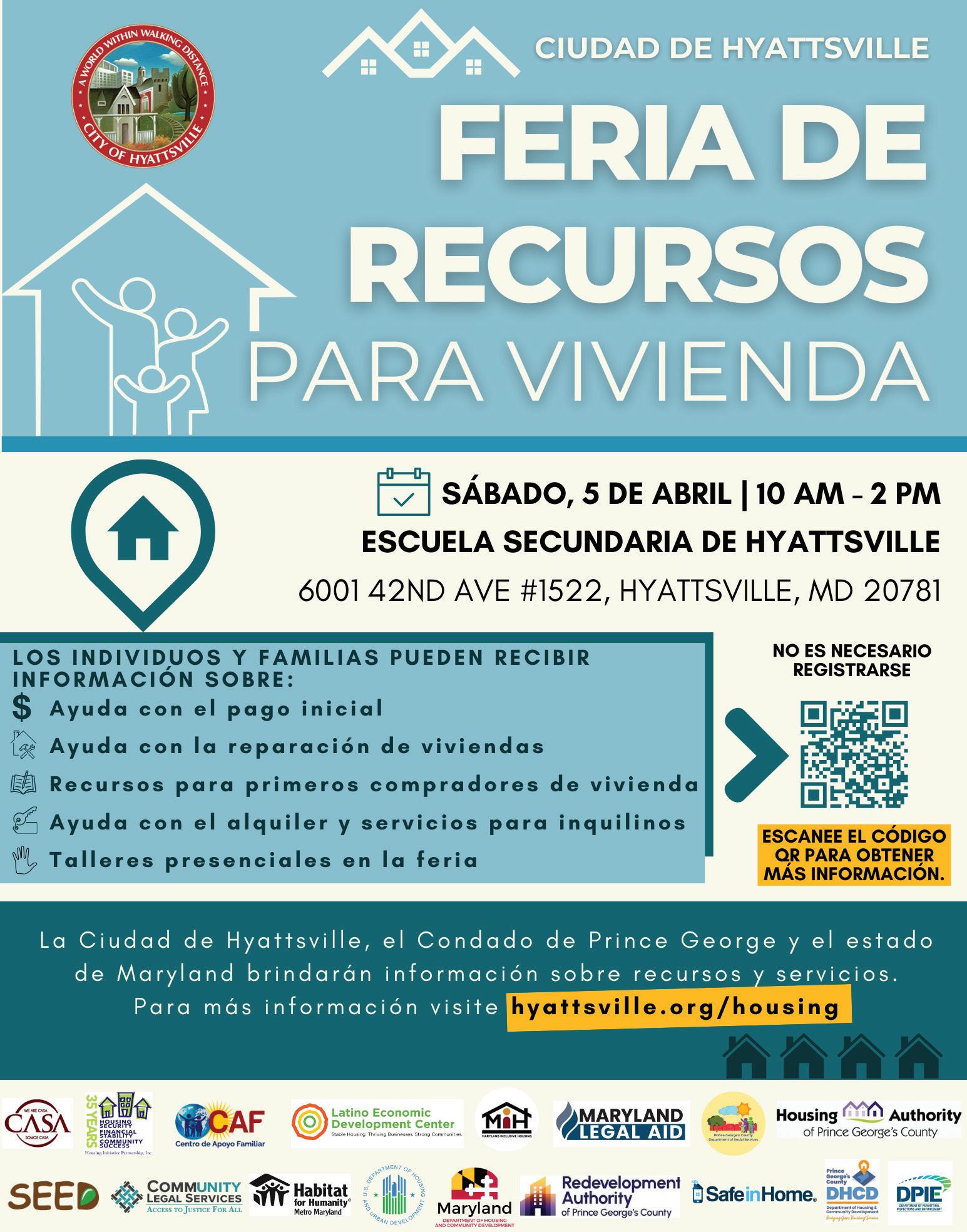
Dear Miss Floribunda,
Last year, not much of what I planted in the spring survived a summer my neighbors and I called Death Valley Days. I watered often, but it was an ordeal for me and didn’t save the plants. It was so discouraging that I have decided to switch to houseplants I can tend in airconditioned comfort. I did come to the Hyattsville Horticulture Society seed sale in February, basically for the baked goods and camaraderie, but instead of seeds I bought plants.
The purple spiderwort, the oyster plant and the Christmas cactus are doing fine, but the cyclamens I bought look ghastly. The flowers have fallen off, and the leaves are patchy brown and yellow and drooping. I looked at a YouTube video that advised an east- or north-facing window, so I moved them from my kitchen table to a window facing east. Per YouTube, I stopped watering them until the soil dried out. However, they are not looking any better. Is there anything I can do to revive them,
or should I just decide they are too fussy for me and throw them on a compost pile?
Ready to Recycle My Cyclamens on Livingston Street
Dear Ready to Recycle,
Please don’t give up on spring planting, but rather start your seeds indoors so that you can plant strong seedlings before the dog days of summer charge in. For example, whole crops of peas, radishes, spinach and lettuce can be enjoyed during the cooler days of spring. Early tomatoes started indoors will give you a good return before temperatures near 100 F keep them from setting fruit.
The Hyattsville Horticulture Society (HHS) is going to have a seed-starting workshop that I urge you to attend. It will take place at the municipal center on Saturday, March 15, from 10 a.m. to noon. Dr. Julie Wolf, plant physiologist and soil scientist, will show slides and share her expertise. If you buy any of the

seeds left over from the February sale, you can talk with savvy area gardeners who can give you advice more exactly suited to the Hyattsville microclimate than the scant information on the back of the seed packets. These hands-on experts will also let you know which vegetables and flowers did well for area gardeners last year and which are not worth the risk this year.
Please don’t throw away your cyclamen. My British houseplant expert, Prunella Potworthy, surmises that because you stopped watering them and because they are in the warmth of the kitchen, these cool-weather bloomers are going dormant. Also, she suspects you might
have splashed water on their leaves, which they hate. Like African violets, they prefer to be watered from the bottom and allowed to dry out between waterings. Water on their leaves causes them to rot. I suspect you have never tried to nurture African violets, or you might have thought of this because there are many similarities — so many that even some online “experts” claim they are from the same family, Gesneriaceae. Actually, cyclamen are from the Primulaceae family and are far more closely related to primroses than African violets are to violets. However, their sensitivity to water on their leaves is characteristic of gesneriads, as is the cyclamen’s
clumping habit and refusal to bloom unless pot bound. Plants from both of these families grow under protective tree canopies, but this is where the similarities of habitat end. They come from radically different parts of the world with extremely dissimilar climates. While African violets nestle among tree roots in the tropical rainforest, cyclamen spread around the trunks of trees in forests in the Mediterranean, particularly Greece and Lebanon. Unlike everblooming African violets, cyclamen need summer dormancy. In their Mediterranean habitat, the summers are hot and dry, so they shrink back into themselves. Unlike African violets, they grow from tubers, which provide them with enough stored moisture to maintain life till the weather cools.
They will put forth new shoots and growth in autumn and bloom in the mild Mediterranean winter. In fact, you need to keep them cool in your house, which is why Prunella believes you should move them out of the kitchen into a somewhat underheated room. Their ideal blooming temperature is from
draws upon three major influences: Maryland’s Indigenous people, the British who settled in Maryland in the early 17th century, and the African diaspora. Several minor influences also left their mark, including the Pennsylvania Dutch who settled in Western Maryland, the Quakers who built a community around Sandy Springs, and the many immigrant communities who settled in Baltimore, including people from Central and Eastern Europe.
The second half of the 20th century brought still more cuisines to Maryland that are reflected in cookbooks, restaurants and festivals across the state. The Great Maryland Recipe Hunt, organized by the Maryland State Archives in partnership with the HammondHarwood House, “aims to collect family recipes that showcase the state’s cuisine,” according to a Washington Post article from January 2023. White said she plans to compile these recipes into a cookbook that will be available online as a PDF.
If you would like to try the historic recipes in either book, you may be able to find (or order) the more particular ingredients at the District’s Eastern Market or at one of the Amish markets in our area, according to White.

Imke Ahlf-Wien is a nutrition educator with a passion for fresh, locally procured foods.

moles alive. They are voracious eaters and, if deprived of food, typically expire in less than a day. They eat their weight in earthworms and insects almost daily, a rate of consumption that totals 50 pounds or more a year. To keep up this feeding pace, they seldom sleep, taking short naps every couple of hours before returning to their tunneling.
How moles find their prey in these earthen runs — in the darkness and with limited hearing — was long a mystery to naturalists. Scientists at Vanderbilt University have discovered one of the moles’ secret weapons, however: They can smell in stereo. Each nostril operates independently, with the two inputs giving a very precise signal to the whereabouts of a prey item. Moles whose noses were experimentally clogged couldn’t tell there was any food around at all; if only one nostril was clogged, they could tell there was food but couldn’t find it.
Another adaptation to their subterranean lifestyle: Moles also have a high tolerance for breathing in carbon dioxide at levels that would prove fatal to most mammals due to a special kind of hemoglobin in their blood cells that allows them to carry more oxygen in the low-oxygen, highcarbon-dioxide tunnels.
Eastern moles aren’t the only moles that call our region home. Star-nosed moles


(Conduylura cristata) are not as common or widespread as Eastern moles, but can be found in many places across Maryland where there is water and mostly sandy soil. They have a longer tail than Eastern moles do, and their eyes, while still quite tiny, are at least functional.
Impressive as the Eastern mole’s olfactory senses are, star-nosed moles put them to shame. Around their nose is a ring of super-sensitive, fleshy appendages packed with epidermal receptors that collectively are called the Eimer’s organ. With this adaptation, it appears star-nosed moles can even smell underwater.
While Eastern moles carry the species name aquaticus, they’re almost entirely terrestrial, though they can swim well if pressed. Starnosed moles, on the other hand, spend as much time in the water as in their tunnels. On land, they hunt the same prey as Eastern moles but supplement their diet with small fish, tadpoles and other foodstuffs hunted underwater.
A star-nosed mole will locate aquatic prey partly by searching around with its Eimer’s organ. But its real trick is breathing bubbles out through its nostrils, then breathing the bubbles back in. Those incoming bubbles carry scent molecules that the mole sniffs in stereo just like its landlubber cousins do. Visit bit.ly/4hfzTj8 to watch this watery feat in a National Science Foundation video.
Unfortunately, golf course managers
and lawn lovers routinely make mountains out of the molehills they discover, railing against the unsightly runs and fresh piles of dirt. Gardeners wage war on moles in the belief that they tunnel into vegetable patches in search of carrots, potatoes and radishes. In fact, the pilfering is done by small vegetable-snacking rodents called voles that simply use mole tunnels as their supermarket shortcuts.
Despite the bad rap, moles are entirely beneficial in Maryland lawns and gardens, both because they eat such prodigious amounts of underground insect pests, and because they loosen and aerate the soil with their tunneling tactics. The biggest threats to moles are homeowners who trap or poison without understanding this ecological value. Cats and dogs also take a mole toll when they catch moles while the tiny tunnelers make rare excursions aboveground, or even actively dig the moles out of their tunnels.
Next time you see a mole run or molehill, remember it’s just a mole, following the scents of home — in stereo! — through its labyrinthine domain.
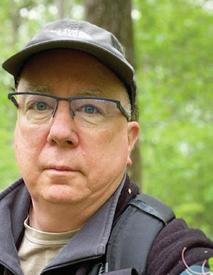
Rick Borchelt is a local naturalist and science writer who writes and teaches about natural history, gardening and the environment. Reach him with questions about this column at rborchelt@gmail.com.

q u a r a n t i k i i s c l o s e d f o r s e a s o n , b u t t h e
g o o d t i m e s r o l l o n i n s i d e . . .
P l e a s e c h e c k o u r F a c e b o o k & I n s t a g r a m f o r u p d a t e s !
N e w , f r e s h , s e a s o n a l f o o d a l l y e a r r o u n d !
c o m e g r a b a b e e r f r o m o u r f a n t a s t i c b r e w m a s t e r j e f f
h a n c o c k ! t h e r e ’ s a l w a y s s o m e t h i n g n e w t o t r y
g i f t s , t o y s , c a n d y , b e e r , w i n e , t h e u n i q u e & t h e o d d
a v a i l a b l e e v e r y d a y i n t h e g e n e r a l s t o r e !
r e s t a u r a n t h o u r s : S u n d a y - T u e s d a y 1 1 a m - 9 p m ,
W e d n e s d a y - S a t u r d a y 1 1 a m - 1 0 p m .
G e n e r a l S t o r e : o p e n e v e r y d a y 1 1 a m - 9 p m !
q u a





Find more local events all month long in our new, continuously updated online calendar at StreetcarSuburbs.News/events.
Here’s our list of events sponsored by local nonprofits, arts organizations and performance venues, occurring between March 12 and April 8; all information is current as of March 7. For events and meetings organized by the City of Hyattsville, see The Hyattsville Reporter in the newspaper’s centerfold.
Please send notices of events that will take place between April 9 and May 7 to managingeditor@hyattsvillelife. com by April 3.
Weekly acoustic blues jams, in the Piedmont blues tradition. Listeners welcome! Free. Saturdays, 1 to 5 p.m. Archie Edwards Blues Foundation, 4502 Hamilton St. acousticblues.com
Riverdale Park Farmers Market is open every Thursday from 3 to 7 p.m. in the parking lot near the Riverdale MARC Station, 4650 Queensbury Rd. For more information, contact rpkfarmmkt@gmail.com.
Sharpen your drawing skills in a relaxed, informal setting at Hyattsville figure drawing group’s drop-in drawing sessions at Pyramid Atlantic Art Center. Sessions consist of several short warm-up poses and a single sustained pose for the duration of the session. Bring your own art supplies; drawing boards and chairs provided. $20/session or $75/5-session punch card or $15/session for Pyramid Atlantic members. Tuesdays, 6 to 9 p.m. 4218 Gallatin St. hyattsvillefiguredrawing@gmail. com
Busboys and Poets hosts an open mic for poets every Thursday. $5. 8 to 10 p.m. 5331 Baltimore Ave. 301.779.2787. busboysandpoets.com
ONGOING
“Members MashUP” is an open call for members to exhibit works of their choice. On view March 14 through April 20. Wednesday and Thursday, 10 a.m. to 8 p.m. Friday through Sunday, 10 a.m. to 6 p.m. Pyramid Atlantic Art Center, 4218 Gallatin St. pyramidatlanticartcenter.org. 301.608.9101
MARCH 12
Enjoy an afternoon of learning the basics of creating a crochet stuffed animal at Craft and
Create: Beginner Crochet Amigurumi. Minimal crochet experience required. Materials will be provided. Free. 3 to 5 p.m. Register at pgcmls.info/ events. Hyattsville Branch Library, 6530 Adelphi Rd. 240.455.5451
MARCH 13
Practice and enhance your public speaking and leadership skills with the Prince George’s County Women’s Bureau Toastmasters Club on the second Thursday of every month! Free. 7 p.m. For more details and to register for this virtual event, please visit pgcountywomensbureau. toastmastersclubs.org.
MARCH 15
Dynamic and soothing fourpiece acapella group Kings Return performs at Publick Playhouse. $35 general admission, $30 seniors and students. Purchase tickets through pgparksdirect.com. 5445 Landover Rd., Cheverly. 301.277.1710. publickplayhouse@ pgparks.com
MARCH 16
Celebrate St. Patrick’s Day at Streetcar 82 Brewing Co. with the O’McPub Band. Free. 4 to 7 p.m. 4824 Rhode Island Ave. streetcar82brewing.com
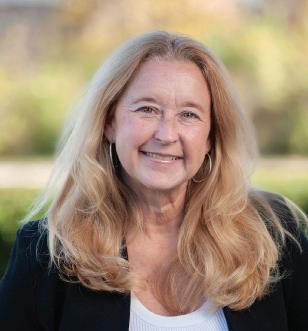
Come to a St. Patrick’s Day show featuring Corned Beef Hash Free. 7 to 10 p.m. Maryland Meadworks, 4700 Rhode Island Ave., Suite Bee. 201.955.9644. marylandmeadworks.com
MARCH 17
When three of their four children are diagnosed with retinitis pigmentosa, a rare and incurable disease that leads to severe visual impairment, the Pelletier family sets out on a trip around the world to experience its beauty, as chronicled in the National Geographic documentary “Blink” (2024, 87 min.). Free. 7 to 9 p.m. Register at pgcmls.info/events. Hyattsville Branch Library, 6530 Adelphi Rd. 240.455.5451
MARCH 22
As part of Route 1 Corridor Conversations, learn about the vibrant arts scene supported by the Pyramid Atlantic Arts Center in Hyattsville. Attendees can join via telephone or Zoom. Free. 2 to 3:30 p.m. Register at hyattsvilleaginginplace.org/ events.
MARCH 26
UMD Jazz Jams brings Districtbased saxophonist Elijah Jamal Balbed to perform and lead a community-wide jam! Free. House band starts at 7:30 p.m.
Jam starts at 8:30 p.m. Busboys and Poets, 5331 Baltimore Ave. 301.779.2787. busboysandpoets. com
MARCH 28
Brett Buehler performs at Streetcar 82. Free. 7 to 9 p.m. 4824 Rhode Island Ave. streetcar82brewing.com
MARCH 29
Janine & Arch come to Maryland Meadworks. Free. 7 to 10 p.m. 4700 Rhode Island Ave., Suite Bee. 201.955.9644. marylandmeadworks.com
APRIL 4
With intriguing soundscapes and dazzling visuals, Sonic
Frontiers presents eclectic, improvisatory experiences with live electronic music and projection art during this mini-festival. $20 (Fee waived for drop-in performers). 5 to 10 p.m. Buy tickets through pgparksdirect.com. Brentwood Arts Exchange, 3901 Rhode Island Ave., Brentwood. 301.277.2863. brentwoodarts@ pgparks.com
APRIL 5
Humbalaya brings its tasty dish of funk, rock and jazz-fusion blended in Washington, D.C., to Streetcar 82. Free. 7 to 9 p.m. 4824 Rhode Island Ave. streetcar82brewing.com














that same spring cleaning today, you’d have to take your pesticide, car battery, and other household goods to a separate, temporary drop-off site at the Brown Station Road Convenience Center. Nine of section B’s 11 cells are already full, and the Household Hazardous Waste Site is currently closed so that the county can build a section C.
In 1977, the county also had municipal landfills in Bowie, Beltsville and Laurel. By 2017, only Brown Station Road remained operational, though there are still a few specialized landfills accepting materials such as construction rubble.
Like Prince George’s County, jurisdictions across the nation are fighting to divert materials from their landfills to increase recycling,
prevent toxins from seeping into the air or groundwater, or simply to save space. Recently, these jurisdictions have also been motivated by the threat of global warming, and one of the biggest problems is food disposal. When organic materials like meat, vegetables or leaves decompose, they can break down into different substances under different conditions. “Landfills have very little air or oxygen in them,” explains Dr. Xinrong Ren, a physical scientist at the National Oceanic and Atmospheric Administration’s air resources laboratory in College Park. “This is partly because they are constantly being compacted by heavy earthmoving equipment.” As a result, food and other organic matter that would produce carbon dioxide (CO2) if they decomposed in the open air produce methane when buried in landfills.
Hyattsville and College Park, MD
Mondays at 7:00 PM St. Marks Catholic Church Hyattsville, MD
Wednesdays at 9:30 AM
St. Andrew’s Episcopal Church College Park, MD

Along with coal and oil, methane — the main ingredient in natural gas — is one of the most common fossil fuels. One reason it’s so popular is because it’s the cleanest of these fuels. Every day, millions of people cook on gas stoves without ventilation. Running a gasolinepowered generator indoors, in contrast, would generate lethal amounts of carbon monoxide. Many coal and oil-fired power plants have converted to natural gas to lower their emission of particulates, sulphur dioxide and mercury.
Natural gas is not a perfect fuel, though: It combines with ground-level ozone to produce smog, which exacerbates asthma and other respiratory illnesses. A bigger hazard, however, is that methane is a powerful driver of global warming.
the Earth as a mix of visible, ultraviolet and infrared light, but it leaves the earth and travels back into outer space almost entirely as infrared energy or heat.” The main gases in the atmosphere, oxygen and nitrogen, don’t interact with infrared. However, greenhouse gases (GHGs) like carbon dioxide, methane and nitrous oxide absorb the infrared light leaving the earth and then vibrate that energy back into the atmosphere as heat. How much heat they trap depends on their shape and how fast they break down. CO2, the most common GHG, is one carbon atom tightly bound to two oxygen atoms and can last for centuries.
Methane (CH4), the second most abundant GHG, is one carbon atom bound relatively loosely to four hydrogen atoms. Therefore, infrared light causes CH4 to vibrate much more than CO2, so it traps much more heat, but it breaks down in approximately 10 years. Scientists rank greenhouse gases by comparing how much heat the same amount of CO2 would trap in 100 years. At any given moment, methane traps about 80 times more heat than CO2, which works out to approximately 28 times more over its shorter lifetime.
For details, contact facilitator Donna Chacko at 301-277-2970 or serenityandhealthdc@gmail.com Hyattsville and College Park, MD
The MIT climate portal explains, “Energy from the sun enters
To learn more about Centering Prayer, go to https://www.contemplativeoutreach.org/centering-prayer-method/

Indivisible Group will meet every other Tuesday, from 6:30 to 8 p.m. at Hyattsville Mennonite Church, 4217 East-West Highway. More information can be found at groups. io/g/IndivisibleRt1Corridor. Hyattsville residents can
Unlike coal or oil, which develop from organic matter over thousands of years, methane can be produced very quickly. In a process called enteric fermentation, ruminants, such as
request to join the “We are Here for Hyattsville” Slack group by emailing wearehere4hyattsville@gmail. com.
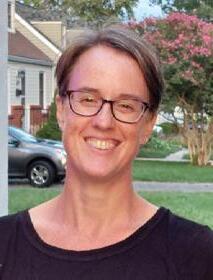
Jessica Arends is the arts, culture and lifestyle columnist for the Life & Times.
cows, cattle and sheep, constantly burp out methane as they digest their food. Methane is also produced from chicken and pig manure, as well as human waste processed by water treatment plants.
By taking atmospheric measurements using aircraft, Ren and researchers from the University of Maryland, Purdue University and other institutions helped the Maryland Department of the Environment estimate that in 2021, landfills accounted for 44% of the state’s methane emissions. This is almost as much as the next three sources — agriculture (17%), the natural gas industry (16%) and wastewater management (15%) — combined.
“We simply must get food out of our waste stream,” says Michele Blair, the City of Laurel’s environmental programs manager. “Food waste and products contaminated with food, like pizza boxes and paper towels, make up 35% of what isn’t recycled. Landfilling food is also very expensive because it’s heavy, and by the end of 2025, the tipping fee for trash is expected to go up to $85 a ton. Worst of all, food accelerates global warming.” If leaves, grass, trees or garden clippings were buried in a landfill, they would also produce methane. So why do experts like Blair and Ren believe that food is the problem? Maryland’s towns and cities have been picking up and diverting yard waste from landfills ever since the Maryland Recycling Act of 1988, so food is the main organic material left.
The next article will explore the local options for disposing of food without disrupting the environment.
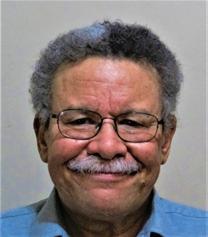
Paul Ruffins is a citizen scientist and a professor of curiosity.





By PAUL RUFFINS
During the Feb. 18 city council meeting, City Administrator Tracey Douglas and Deputy City Administrator Laura Reams spoke about attending a recent conference of the International City/County Management Association, where there were many discussions about using generative AI to evaluate large data sets, increase efficiency and improve city services.
Despite all the potential benefits, Douglas noted that the city is not investing any money in AI at this time. “We are in the exploration phase,” Douglas said. “This is a part of us just being transparent with the community and the council.”
She also emphasized that she is aware of potential security risks and environmental concerns.
Most AI-related public comments at the Feb. 18 meeting were negative in tone. Resident Daniel Broder, who said he was working on a doctorate in AI, bluntly told the council, “Do not spend money on this. There are no guardrails in place for people’s safety.” Broder noted that data centers consume huge amounts of electricity, and he strongly cautioned against making certain data available to the police.
In the days leading up to the council meeting, the HOPE (Hyattsville Organization for a Positive Environment) listserv reflected a similar apprehension. Hyattsville resident Michael Gorman wrote, “The chances that we’re going to use AI to make things ‘more efficient’ are, I would say, exactly zero.” Resident Chuck Perry, who described himself as an electrical engineer, argued that Hyattsville’s AI policy appeared
to be influenced by and mirror the Trump Administration’s open door to “unchecked deployments with fewer oversight mechanisms.”
Later in the meeting, councilmembers discussed several basic AI applications they’d consider adopting.
A new AI-generated closed captioning service for streaming public meetings would cost approximately the same amount as the current service ($12,000 for 100 hours), while also having translation capabilities. Another considered application would take notes during meetings and cost $8 to $20 an hour. Councilmember Emily Strab (Ward 2) of the city’s Police and Public Safety Committee pointed out that the stop-sign cameras installed to protect children in school zones use a program similar to AI.
In marked contrast, the tone of a July 2024 county council meeting was much more positive about AI. On July 2, 2024, County Councilmember Wala Blegay (District 6) and four other councilmembers introduced County Resolution 061-2024, which called for the establishment of an AI task force, partly to “build public trust in the Artificial Intelligence era.” In a separate statement, Blegay wrote, “As we embrace the era of AI, it is imperative for Prince George’s County to proactively engage with this transformative technology to enhance government services to drive economic growth and ensure a competitive edge. The Task Force represents a pivotal step towards harnessing the potential of AI to benefit our community and shape a brighter future for all country residents.”
In an interview with the Life & Times, Blegay explained that the
resolution didn’t pass, but only because then-County Executive Angela Alsobrooks assured her that she was already promoting a similar idea. Blegay explained that the county probably has the highest percentage of Black AI experts in the nation because so many work for government agencies or the Pentagon.
“However, several of my constituents who love living here told me they felt they had to locate their businesses in Virginia because Prince George’s wasn’t perceived to be a hub of research development, despite being home to the University of Maryland, Bowie State University (BSU) and Prince George’s Community College,” Blegay said. Blegay is adamant about the potential of AI as a driver of economic growth and said she feels it’s critical that the area’s students receive training in this emerging technology.
Although Blegay did not go into specifics, she said she feels AI would be useful in managing traffic or improving the performance of the county’s 311 system, a nonemergency call center, which she says can take months to respond to residents. According to the “Artificial Intelligence Handbook for Local Government,” published in September 2024 by the University of Michigan, “AI tools have been used to assist with traffic analysis to improve road network efficiency and reduce carbon dioxide emissions. This can include predicting the need for road maintenance, improving signal timing, optimizing bus routes, and enforcing speed limits.”
The handbook cites examples
of AI being used successfully to reduce traffic delays in Chattanooga, Tenn., and prevent eviction for at-risk families in Los Angeles. It also details notable failures, such as one example in Michigan where a privately contracted AI service for the Michigan Unemployment Insurance Agency incorrectly flagged 85% of cases as deliberately fraudulent when the problems were instead due to simple mistakes.
Ultimately, the handbook strongly recommends against governments using generative AI to produce and release images or video that will not be inspected and approved by human beings, and suggests that AI poses the greatest risk when used for real-time decision-making by the police, noting that “AI facial recognition used in law enforcement software consistently misidentified Black faces at a higher rate than White faces.”
County resident and tech entrepreneur Vennard Wright, who is Black, said he was inspired to develop an AI system after a May 2023 attempted shooting on a school bus in Oxon Hill. “That’s when I asked myself whether AI could help, particularly in preventing mass shootings,” Wright said. He started PerVista, a security company which monitors video feeds and uses AI to identify firearms in environments like schools and hospitals.
“Our software has been trained on thousands of images of guns, so it has an inherent bias towards firearms, particularly long guns and assault weapons,” Wright said. He noted that clients can
also determine how certain the software needs to be before it automatically notifies law enforcement. In an empty building at night, 40% certainty that a long, thin object held horizontally at eye level is a firearm might be enough to alert security. In hospitals, where many people use canes or crutches, the AI might have to be 60% certain to trigger a response.
When asked about racial biases inherent to AI used by law enforcement, Wright pointed out that his technology was recently welcomed in a situation where almost everyone was Black. In 2023, there was a fatal shooting during BSU’s homecoming. In 2024, the university used PerVista’s remote-controlled drones and software to scan for firearms during its homecoming football game and other events, which all ended safely, according to Wright. Wright explained that racial bias arises when AI programmers consciously or unconsciously believe that Black or Hispanic people are more likely to be criminals and, therefore, consciously or unconsciously start training their AI programs to overfocus on race. Even true presumptions — for example, that shooters are almost always male — can cause problems if they result in AI systems not getting enough training in recognizing women with guns.
“AI systems reflect the biases, beliefs, and assumptions of the people developing them,” Wright said. “That’s why we’re not training our system to identify different types of people. We’re teaching it to get better and better at finding guns.”
50 to 65 F. A temperature much over 70 F will cause them to go dormant as they do in the wild during summer.
It is a pity you can’t plant them outside, but our winter temperatures are still much too cold, so what you have, Cyclamen persicum, have to be houseplants. There is a hardy but less showy variety, Cyclamen hederifolium, that can survive winters in zones as far north as New England, although it is usually grown in the Pacific Northwest, and you might want to give it a try. Prunella tells
me it has naturalized in her native England very well.
If you come to the HHS workshop you will meet Prunella, Aunt Sioux, Dave Greenfingers, Wendy Wildflower and others who know how to coax usually discarded gift plants, including poinsettias and amaryllis, back into bloom. They have told me that the key is knowing what conditions a gift plant responds to in its natural habitat.

Miss Floribunda writes about gardening for the Life & Times. Email her at Floribundav@ gmail.com.



head coach Joe Sego (say-go). First, it occurred at DeMatha High School, from which he graduated in 1994. Second, it made him the first Washington-area Catholic Youth Organization (CYO) coach to win four straight boys basketball championships.
While the Jaguars were expected to burnish their hoops tradition with another title, they also entered five tournaments and won four. The only one they failed to win came in the Bullis Invitational against an AAU team. The championship pushed the Jaguars’ record to 40-6 (.870 winning percentage).
“We’ve been so successful all year long,” said Sego, who has captured seven CYO MidAtlantic crowns. His mentor, Dick Brown, won St. Jerome’s first two in 1978 and 1985.
Sego said he would prefer to have more of a challenge from CYO teams, but with the ever-increasing rise of AAU programs and the drop off of other parishes in the DMV, that has not happened. He, too, sometimes loses top players during the season because they leave to play in AAU tournaments.
“CYO competition has been down since the pandemic,” Sego said. “But it doesn’t affect how hard we work. The championship game is always kind of our celebration. Whether we’re playing a good team or bad team, it ends our season. And it’s special because I don’t just look at this game; I look at all the battles we had.
“This is our way of putting a bow tie on the season.”
Because of his on-court success and
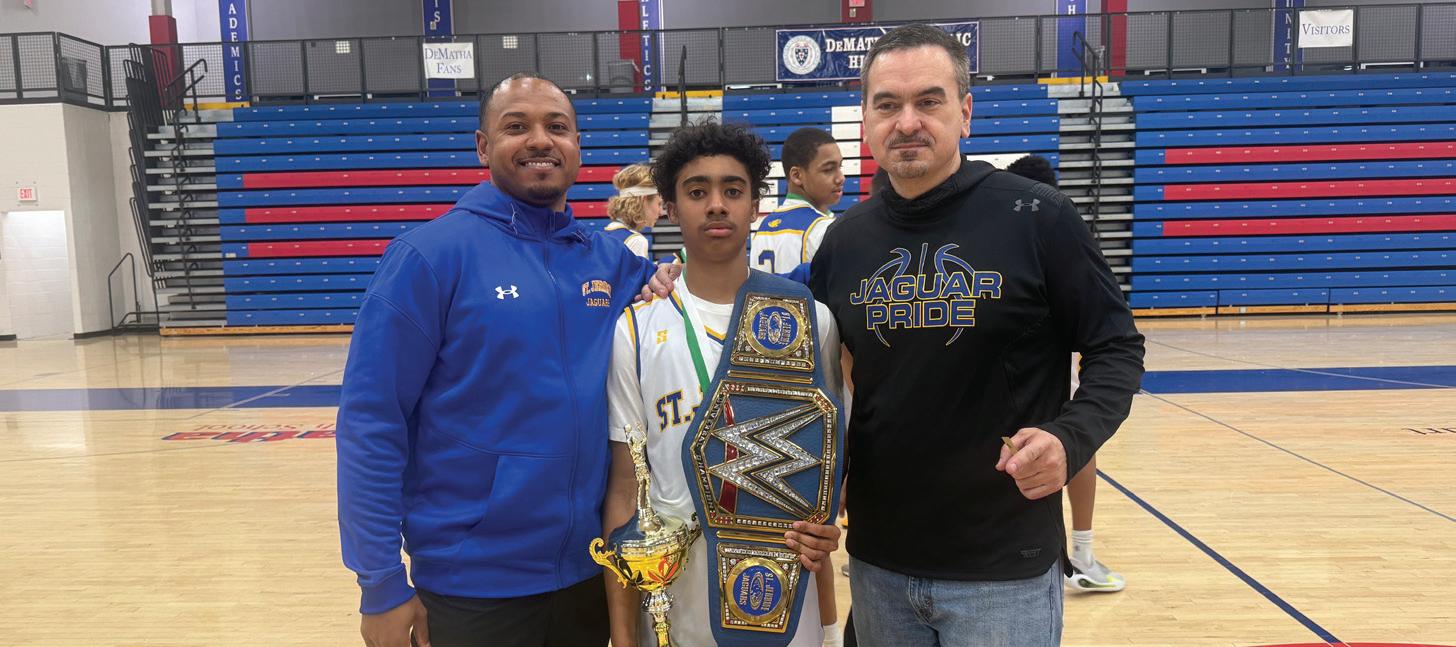
connections that help place young men in high schools, Sego is frequently sought out by parents to coach their sons. If the boys don’t attend St. Jerome Academy or church, they have to go to a Catholic school or be a member of a Catholic parish that doesn’t field a team.
To ensure that his guys can play in as many competitive games as possible and are able to showcase their talents, Sego schedules several non-CYO clubs as opponents each season. This year, for example, the Jaguars defeated DeMatha’s freshman team (twice) and JV squads from Einstein and Archbishop Carroll high schools.
“It’s been a nice run,” Sego said. “This is one of the top five teams I’ve coached.”
Mount Hope and Largo’s JV were the only high schools to beat St. Jerome. In the Mount Hope game (an 85-80 loss), Luke Roberts scored 40 points. He will return to the Jaguars next season.
Sego often uses the losses to teach valuable life lessons. Mike Landi, who coached Sego
when Sego attended St. Mark the Evangelist, on Adelphi Road, remembers one such occasion at a tournament three years ago.
“St. Jerome was losing by 20 points to Washington Jesuit Academy when Joe called timeout during the second half,” Landi said. “He sat his kids down and said, ‘There is no pouting in basketball. Now go out there and finish this game doing the best you can.’”
Landi is also proud of how Sego is genuinely concerned with his players’ wellbeing on and off the court.
“He cares about each and every player on his team,” Landi said. “I remember once following a loss that several parents wanted his attention, but he told them they would have to wait. He had a player who was crying, and a word with him at that moment was more important.”
Sego has coached more players at St. Jerome who went on to NBA careers than most college coaches have. These include


former NBA players Quinn Cook, Marcus Derrickson and Victor Oladipo, as well as current players Jeff Dowtin (Philadelphia 76ers) and Naji Marshall (Dallas Mavericks). Cook, who now plays in China, won NBA Championships with the Golden State Warriors and Los Angeles Lakers. Oladipo is a former All-Star who’s working hard to return to the NBA. Derrickson plays in Korea and Kellon Taylor in Georgia (the country). Quanzi Samuels competes in Ukraine, and Kameron Taylor plays in Spain’s top pro league.
Sego also mentored Nick Cross, who just completed his third year with the Indianapolis Colts, and, while at St. Mark, Sego coached former Miami Dolphins AllPro Cam Wake.
“The fact that our program has produced so many professional players — in the NBA, overseas and NFL — certainly helps with attracting new guys,” Sego said. “But it’s actually our commitment to training players year-round at little to no cost to their parents that brings new faces to our gym.”
After accepting his team’s latest championship trophy, Sego complimented St. Thomas More for continuing to play hard and thanked his assistant coaches, Tyler Hubbard and Carlos Hicks.
“We work tirelessly to prepare our players to succeed on the court and in the classroom,” Sego said, “and that’s why they’re so well prepared for future success.”
Chris McManes is a former St. Jerome baseball and basketball coach and now coaches baseball at DeMatha.

